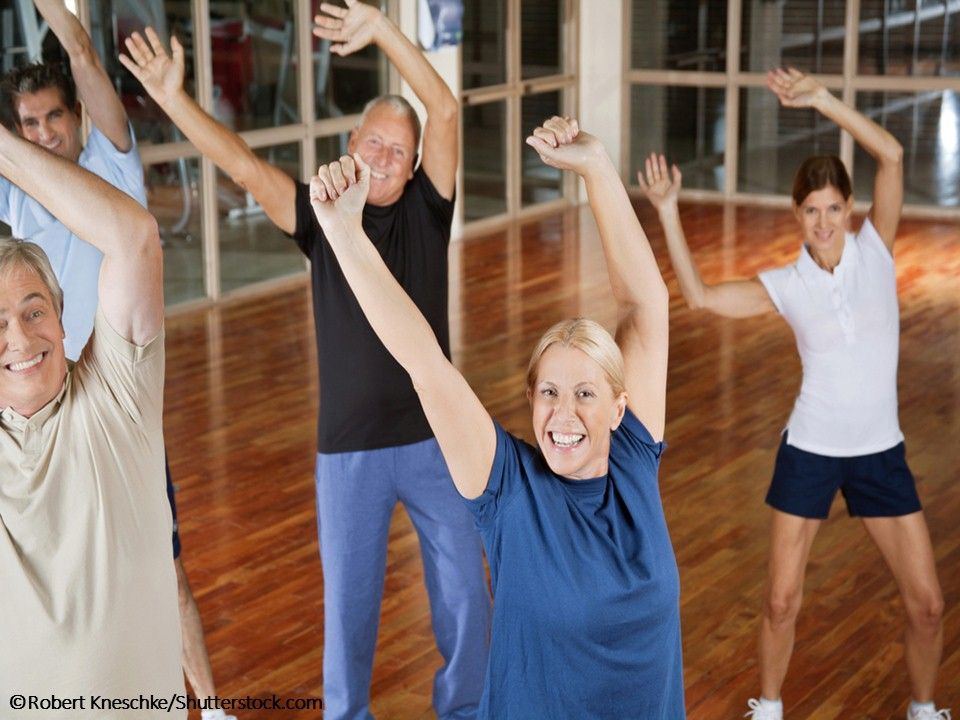Physical Activity Is No Panacea for Fibromyalgia
Moderate physical activity improved function and quality of life but failed to have the expected impact on pain.
Image: ©Robert Kneschke/Shutterstock.com

Increasing daily physical activity has the potential to improve function and physical quality of life and to reduce movement-evoked fatigue for women with fibromyalgia, according to a recent study.
Although exercise is an effective non-pharmacologic treatment for chronic pain, there are limited data on the relationship between lifestyle physical activity and multidimensional symptomology in fibromyalgia. Existing research has conflicting results: some studies found no relationship, some an inverse relationship, and some a positive relationship between physical activity levels and pain.
Merriwether and colleagues1 focused on women with fibromyalgia and comprehensively examined a variety of symptomology domains-pain, fatigue, physical function, pain-related psychological measures, disease impact, and quality of life-relative to daily lifestyle physical activity, both perceived and objectively assessed. Their findings were published in Arthritis Research & Therapy.
The study
The current study was a secondary analysis of baseline data from an ongoing clinical trial testing the efficacy of transcutaneous electrical nerve stimulation (TENS) in women with fibromyalgia, the Fibromyalgia Activity Study with TENS (FAST). Final sample sizes ranged from 158 to 171 for each variable, and participants had an average age of 49.4 years and body mass index (BMI) of 34.4 kg/m2. Most had had a diagnosis of fibromyalgia for less than 10 years and were Caucasian.
Each participant’s level of physical activity was assessed as perceived, using the International Physical Activity Questionnaire (IPAQ), and objectively through wearing a triaxial accelerometer on the nondominant wrist for 7 to 10 days, 24 hours per day, including showering and sleep.
To measure levels of pain and pain sensitivity, researchers used a verbal Numeric Rating Scale (NRS) to assess current resting and movement pain intensity, the Brief Pain Inventory (BPI) to measure overall pain severity and interference, pressure pain threshold (PPT) to measure deep tissue mechanical pain threshold, and conditioned pain modulation (CPM) to assess pain inhibition.
Fatigue assessment included fatigue intensity at rest and during movement using the verbal 0 to 10 NRS as well as the Multidimensional Assessment of Fatigue (MAF) survey to assess the perception of fatigue across multiple domains. Physical function assessments included self-reported physical function, the 6-minute walk test, and the five times sit to stand test. Researchers used specialized scales to measure pain catastrophizing and fear of movement. Finally, disease impact and quality of life were measured using questionnaires.
The findings
The primary hypothesis was that higher lifestyle physical activity levels would correspond to less pain and fatigue, reduced pain sensitivity, greater physical function, lower psychological dysfunction, reduced disease impact, and better quality of life. “However, contrary to our initial hypothesis, there were no significant associations between lifestyle physical activity and the pain, pain sensitivity, pain-related psychological constructs, resting fatigue, emotional [quality of life], or disease impact measures,” the researchers observed.
Researchers found that lifestyle physical activity levels had the strongest correlations with function, physical quality of life, and movement fatigue in women with fibromyalgia. After adjusting for age and BMI, these positive correlations occurred even with low levels of moderate physical activity, such 10 minutes each day, which is well below most physical activity guidelines. The findings were consistently observed for both self-reported and objectively measured assessments of daily lifestyle physical activity.
Implications for physicians
This study has several limitations. First, because the study was cross-sectional, the researchers were unable to determine causation. Thus, better function and quality of life may result in greater physical activity levels as opposed to greater physical activity resulting in improved function and quality of life. Second, physical activity over a 7-day period may not be representative of habitual activity levels. Finally, these results may not represent all fibromyalgia populations, such as those with milder symptoms or men.
These data suggest that physical activity levels have negligible relationships with pain and pain-related psychological constructs in women with fibromyalgia, but that increasing daily physical activity by just 10 minutes per day or more has the potential to improve physical quality of life and reduce movement-evoked fatigue. It remains unclear whether further increases in daily physical activity would result in greater influences on fibromyalgia symptom domains, because few in the patient population were vigorously active.
This information may assist physicians in discussing the benefits of exercise. “Specifically, it is advisable that health care providers acknowledge that exercise and increasing daily activity are likely to improve function and fatigue but may not reduce pain,” the researchers note.
References:
1. Merriwether EN, Frey-Law LA, Rakel BA, et al. Physical activity is related to function and fatigue but not pain in women with fibromyalgia: baseline analyses from the Fibromyalgia Activity Study with TENS (FAST). Arthritis Res Ther. 2018;20:199. DOI: 10.1186/s13075-018-1671-3.